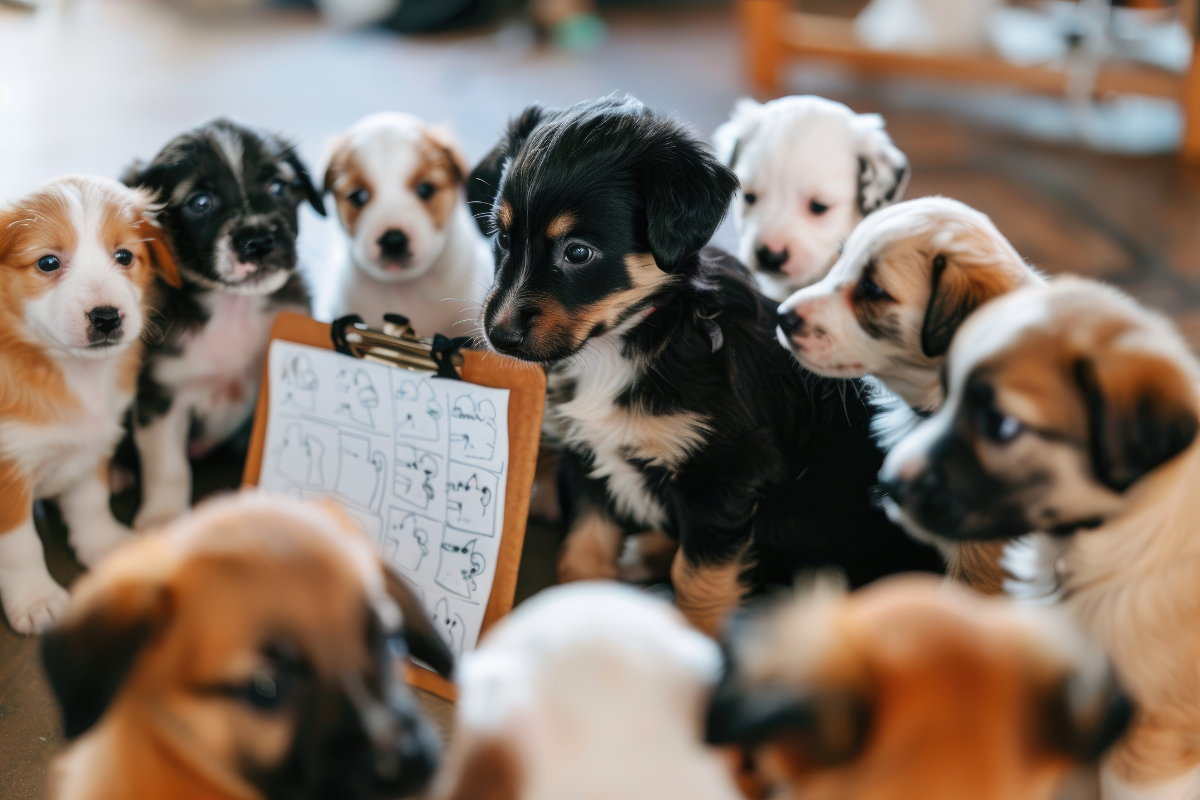Since you absolutely adore your bundle of fluff, you would want to keep her safe by ensuring she learns basic obedience to commands.Dogs easily fall prey to distractions. One moment Betsy is chewing on her favorite toy in the park, the next, she’s running fast ahead, chasing a butterfly.
Teaching your Betsy basic commands will prove useful to keep her away from potential danger and of course, skunk attack! Another upside is the fact that you can take the leash off of her and have a successful outing.
To help you make that dream come true, here are basic tips on how to teach your pup to answer commands:
To start on the right note (or nose!), you need to get the necessary tools that are required for successful training. You will need a leash, a proper collar, and, of course, a large supply of treats for positive reinforcement.
Having something to eat motivates every dog.
When uttering commands to your little pup, you need to speak in a normal, rational tone—that inspires trust and confidence.
Yelling passes the message that you’re upset and it could stress her out, making her more anxious. It could even risk damaging the precious bond with your puppy.
Use an excited voice when you want to praise your dog for following commands. When you want to deliver a correction, employ a growly tone. But when you want to issue commands that speak with more authority and less correction, use a flat, low-pitched tone.
Choose commands that are not just clear, but easy to remember for consistency. This will prevent your dog from being confused. Some common commands include:
Dogs have a short attention span, therefore, it’s advisable to have brief training sessions that span around 10-15 minutes. Introduce the commands bit by bit.
Recall that these commands are habits that your dog needs to pick up. And like all habits, repetition strengthens them. Do 5-20 repetitions of one command before moving to the next one.
Practicing indoors with your little buddy helps her build behaviors without distractions. However, you need to certify that your dog can listen to commands in an unfamiliar environment.
Hence, outdoor pieces of training are necessary. Here, your dog will understand that commands you issue inside or in your backyard, means the same in all situations.
Positive reinforcements are meant to reward your dog and help her understand when she performs well. Reward her with treats, but ensure to keep it small; since you’ll be using them many times.
Also, avoid treats she would need to actively break apart—it would only lead to distractions.
In addition, mix verbal rewards with food rewards; eventually cutting down on the frequency of treats.

It's estimated that Americans own around 70 million dogs.
We are proud of our commitment to animal welfare and quality of our pets.
There are many options for adding a puppy to your family.
Learn More
DEC
19
As a cat owner, ensuring the health and safety of your furry friend is a top priority. With the emergence of avian influenza, commonly known as bird flu, it’s crucial to understand how this virus can affect your beloved pet and what steps you can take to protect them. Understanding Avian Influenza in Cats Avian influenza is a viral infection that primarily affects birds but can also impact other animals, including cats. While the risk of transmission to cats is relatively low, it’s important to be aware of the potential dangers, especially if your cat has access to the outdoors …
Read More
NOV
27
Ah, Christmas! The time of year when homes are aglow with twinkling lights, the air is filled with the scent of pine, and everyone is wrapped in a warm, fuzzy feeling of joy and anticipation. But hey, while we’re all caught up in the holiday cheer, let’s not forget about our four-legged friends who are just as excited about the festivities. Ensuring their safety, finding the right toys, and providing optimal nutrition can make this season even more magical for them. So, how do we make sure our pets enjoy a paws-itively delightful Christmas? Pet Safety: Keeping the Season Jolly …
Read More
NOV
26
There’s nothing like the joy of bringing a fluffy, four-legged bundle of joy into your life. Puppies are the ultimate companions—full of love, energy, and just a little bit of mischief! Whether it’s your first time bringing a pup home or you’re adding a new member to your growing pack, there are a few key things to keep in mind to help your new puppy thrive. Get ready for an adventure of snuggles, playtime, and puppy kisses with these fun and playful tips! 1. Pick Your Perfect Match Before you meet your new best friend, you’ll want to make sure …
Read More